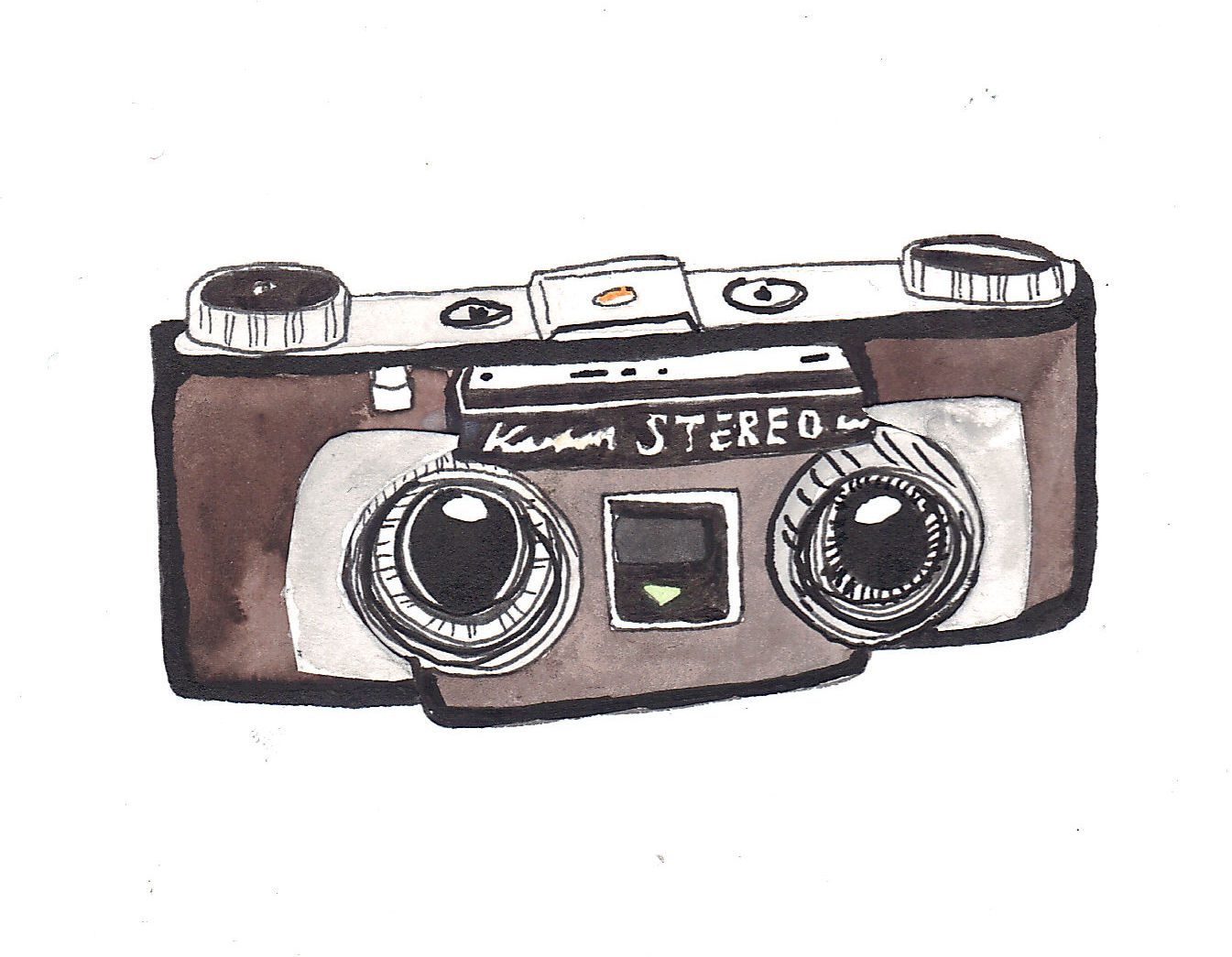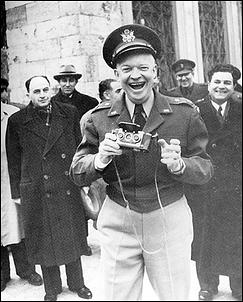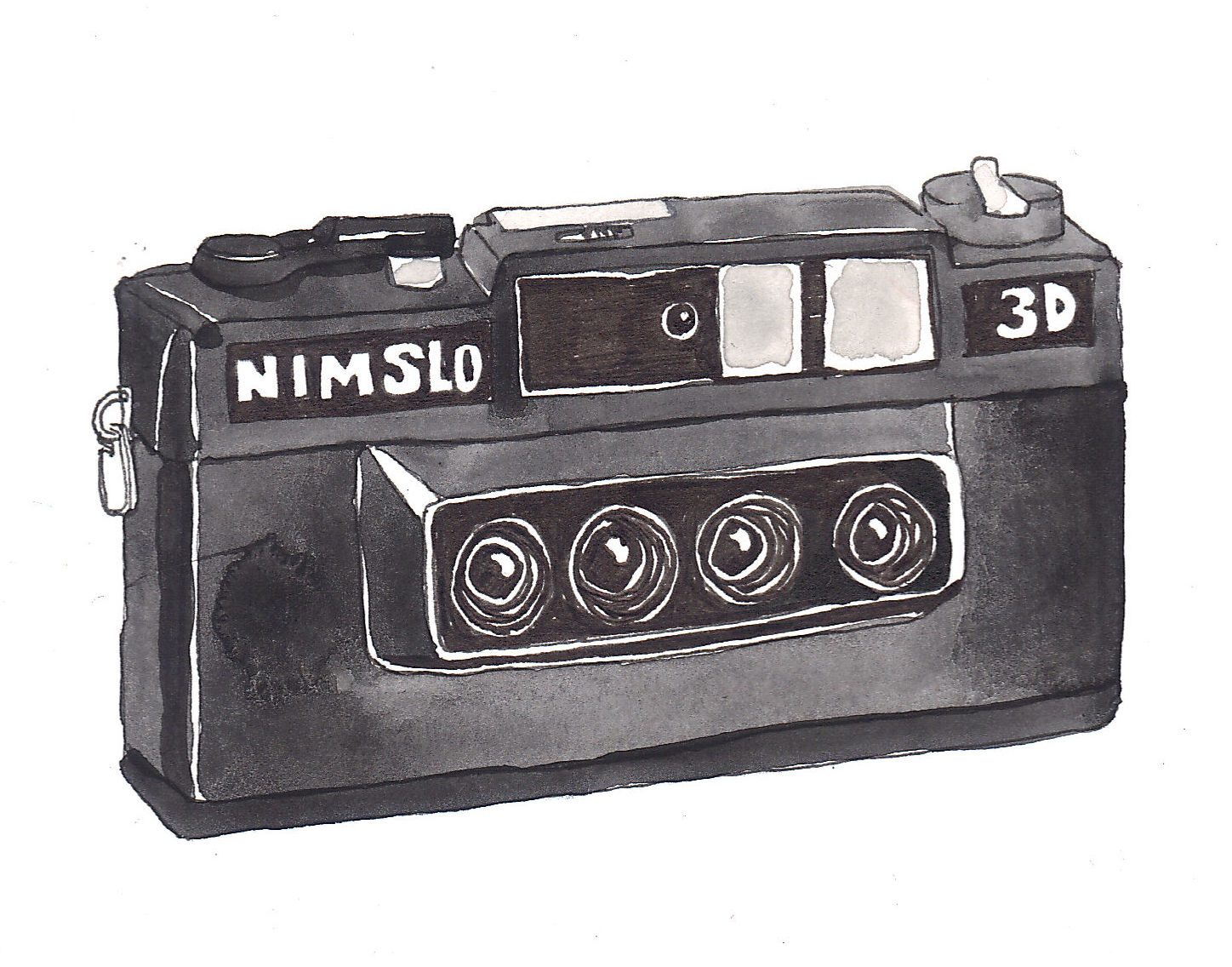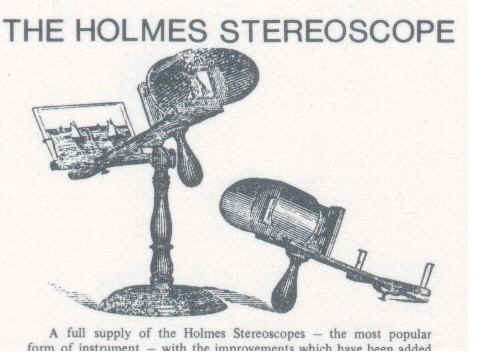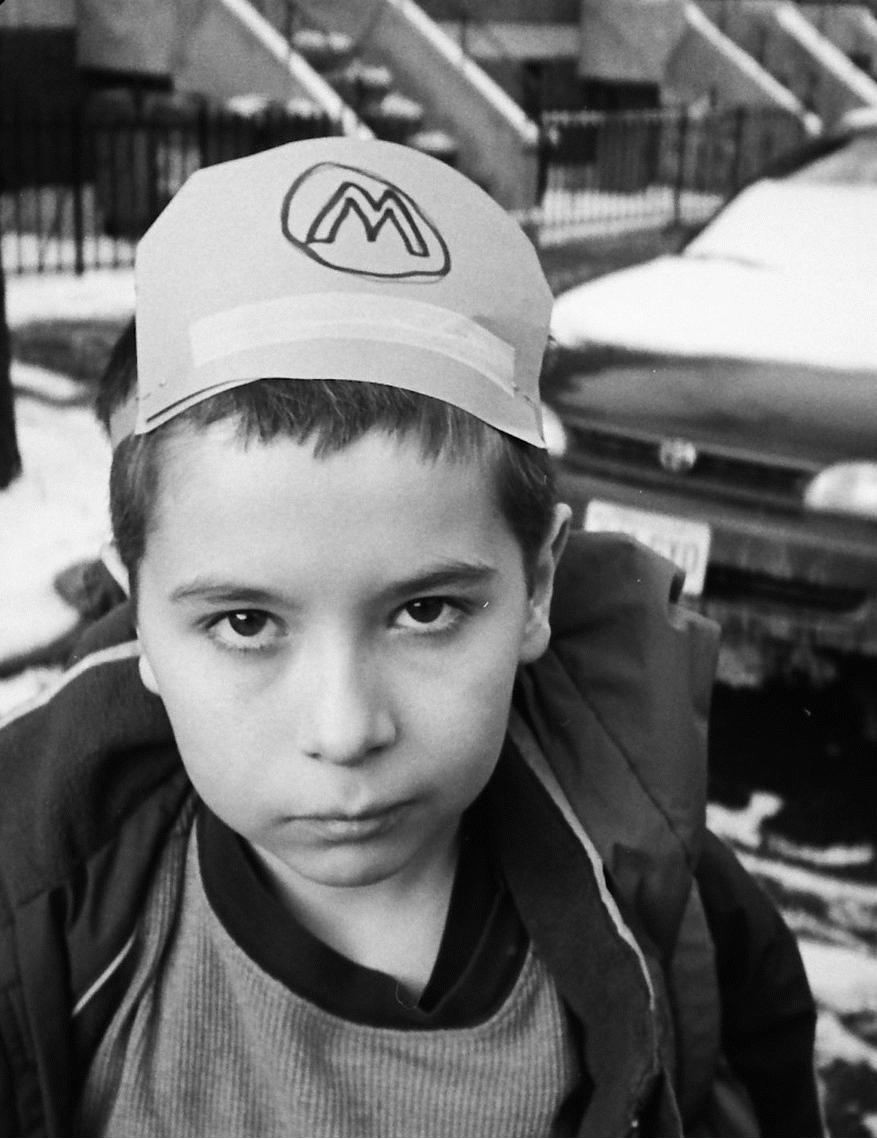
After having transitioned like everyone else to digital photography, I started to feel nostalgic for this period when everyone learned photography by taking film photos and then going into a darkroom and making grainy black and white pictures. I remembered learning about the enlarger, the photo chemicals, and all this stuff, and I missed the smell and everything that goes along with that. So like a lot of people I became interested in film photography again.
About ten years ago, I started collecting cameras, and the really great thing is that these cameras are incredibly cheap. You can find what were once fairly prosumer models for not much money at all, and certainly less than digital cameras even when you figure in the cost of film and development. I also have a basement in my house where it was easy to set up a little darkroom to do the black and white processing.
Early on I bought some 3D cameras. One of these is the “Stereo Realist,” which was a really popular workhorse in the 1950s, a revival of 3D photography after it had been a big thing in the nineteenth century.
A lot of elderly people’s wedding photos were shot in 3D with this camera. Here’s President Eisenhower with his:
In the early 1980s there was another, less successful, attempt to revive 3D photography with a camera called the Nimslo. The novel idea was that it had four lenses rather than two. You could use normal 35 mm film and have it sent off to a processing place where they would turn it into a postcard or small lenticular print, which means as you turn it back and forth you can see the image from different angles and it appears to “move.” Here’s an advertisement explaining the process:
The Nimslo itself had a look that was very of that era. Everything started looking really geometric, like you could draw it with a ruler and a compass.
To me there’s something attractive and repellent at the same time about this design. It’s leaning into this period when things began to look ugly to me, and I was unwilling to accept that aesthetic. Like a lot of people, I think I automatically like the look of things from before I was born. Anything that looks “iconic” from my childhood or earlier seems real whereas everything new looks like some Johnny-come-lately design to me.
My own son had that experience with vinyl records. Ours had been put away when he was a kid so he didn’t see or experience them. He only started noticing them in his teens, which coincided with his interest in The Beatles. At some point we got a record player, and the first record he bought was a Beatles album.
To him it was this exciting but also exotic thing, and he had to ask me how to select an individual track. I was like, “Oh, see these little lines? You move the needle to one of the lines, you can count the number of lines to figure out which track it is…” It was this esoteric information, which is kind of great… and sort of sweet.
But to get back to the Nimslo, the way I learned about this particular 3D camera was from my wife. It was manufactured in her hometown of Dundee, Scotland, and by a completely weird coincidence, her father worked at the only factory where they made the cameras. When he left the job, they gave him a Nimslo, kind of like a gold watch thing, but he wasn’t a photographer, so he gave the camera to me. He passed away this year and it’s now my one memento of him.
I use the Nimslo a lot, and I tend to take family pictures and pictures of people with it. It’s very portable, and has auto-exposure with fixed focus, which makes it sort of like a point and shoot. It’s great for taking quick snap shots, but the challenge with Nimslo photos is you have to come up with a way of looking at them. Unfortunately I discovered that there are very few places that do lenticular printing anymore. You can print out the left and right frames on your own and then mount them on one of those 19th century viewers…
Or you can get hold of a projector and some polarized glasses and view them that way. I have a photo enlarger, but I’ve mostly just been scanning my Nimslo photos, and bypassing some of the normal experience of making prints by taking two of the four images and making either a slide or print from that. Here’s one of my son, which I’ve turned into a GIF so you can see it online:
I suppose you could use any number of apps to take pictures like these today, but to me they’re not quite the same as 3D film photography. And although I like taking pictures on my phone, and I’m really impressed with the image quality, it’s no substitute for a big old camera that keeps me in the process of seeing and thinking about what I’m doing. Photos carry our memories, and in their own unique way our cameras do, too.
***
Wanted/Needed/Loved: Musicians and the Stuff They Can’t Live Without is an illustrated column where musicians share the stories behind meaningful objects. As told to Allyson McCabe and illustrated by Esme Blegvad.
***
John Linnell is a musician primarily known for his work with the long-running duo They Might Be Giants, which he co-founded in 1982 along with his friend and classmate, John Flansburgh. Coincident with release this month of the band’s latest album, I Like Fun, is a world tour that kicks off with a fifty-city trek across the US, then on to Europe, and beyond. 2018 has also seen the return of TMBG’s Dial-A-Song service, with weekly installments of new music toll-free at (844) 387-6962, online at www.dialasong.com, and on streaming sites everywhere.

